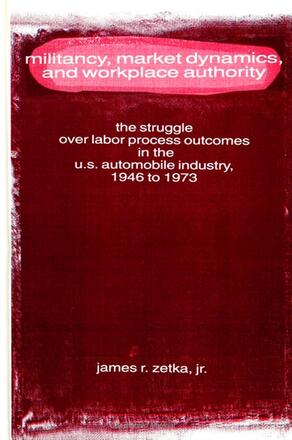
Militancy, Market Dynamics, and Workplace Authority
The Struggle over Labor Process Outcomes in the U.S. Automobile Industry, 1946 to 1973
Alternative formats available from:
Description
This book is an account of the political economy of labor relations in the U. S. automobile industry from the end of World War II to the 1970s. Zetka develops a sophisticated paradigm of hegemonic and competitive market conditions that challenges dominant theories of postwar industrial relations, linking rates of workplace militancy to product market fluctuations, variations in work organization, and differences in authority systems legitimated on the shop floor. He then uses this model to interpret in historical detail the complex market and workplace relationships that unfolded in the industry.
Zetka traces the postwar struggles between management and militant auto workers over the definition of a fair day's work. He argues that management's selective use of a quota-based authority system for occupational groups that had been the most militant during the 1940s and 1950s was primarily responsible for the decline of wildcat strike activity in the auto industry, and that this system was made possible by the emergence in the 1960s of a distinctive market structure that regulated competition between the surviving auto firms.
James R. Zetka, Jr. is Assistant Professor of Sociology at the State University of New York at Albany.
Reviews
"This book is important for students of industrial sociology and for labor historians. Zetka has created an original data base and has analyzed it perceptively. The author, a sociologist, has solidly grounded himself both in the literature of the firm and in the literature of the labor movement in the U. S. auto industry. Consequently, his sociological paradigm is credible and helps us understand how the most autonomous production workers resisted the worst effects of the post-World War II speedup for twenty-five years. " — Robert Asher, University of Connecticut
"This is much better than anything I have read on either the management-and-market side or the labor-relations and strike-militancy side. " — Arthur Stinchcombe, Northwestern University